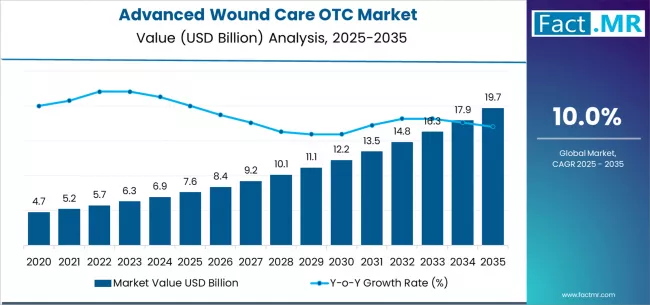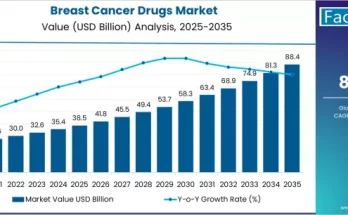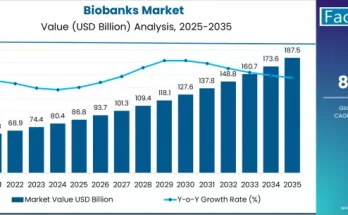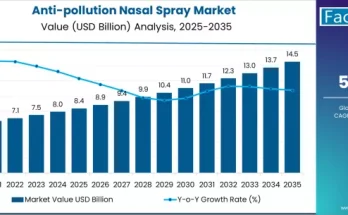The advanced wound care OTC (over-the-counter) market is witnessing significant growth as patients increasingly seek effective, convenient, and self-managed wound treatment solutions. These products are designed to provide superior healing environments, moisture management, and infection prevention, surpassing traditional gauze and adhesive bandages. With rising chronic disease prevalence, post-surgical care demands, and increasing awareness of modern wound care options, the market is evolving rapidly to cater to patient-centric needs.
Market Overview:
Advanced wound care OTC products include foam dressings, hydrocolloids, film dressings, honey-based dressings, hydrogel dressings, greasy gauzes, and non-woven post-operative dressings. Each product offers unique benefits, such as enhanced absorption, cushioning, autolytic debridement, and ease of application. These solutions empower patients and caregivers to manage wounds effectively at home while minimizing clinical visits. Retail pharmacy and e-commerce channels play a critical role in distributing these products, ensuring accessibility for diverse patient populations.
Product Insights:
Foam dressings dominate the market due to their superior absorption and cushioning capabilities, making them ideal for high-exudate acute wounds. Hydrocolloids offer self-adhesive, moist healing environments suitable for chronic wounds such as pressure ulcers and diabetic foot ulcers. Film dressings provide transparency for wound monitoring, while hydrogel and honey-based dressings support moist wound healing and infection control. Non-woven post-operative dressings and greasy gauzes cater to specific surgical and trauma wound care needs.
Applications and End-Use Outlook:
The market is segmented into acute and chronic wound applications. Acute wounds, including surgical and traumatic injuries, represent the largest demand segment due to their high prevalence and immediate care requirements. Chronic wounds, such as diabetic foot ulcers, venous leg ulcers, and pressure ulcers, also sustain substantial market demand, particularly among aging populations and patients with comorbidities. Advanced wound care OTC products improve healing outcomes, enhance patient comfort, and reduce the risk of infection, which is crucial for home care and post-discharge management.
Regional Insights:
North America leads the market, driven by extensive chronic disease management programs, established retail pharmacy networks, and high patient awareness of advanced wound care products. Europe follows closely, with increasing adoption of home-based care solutions and patient education programs. Asia Pacific is rapidly expanding due to rising diabetes prevalence, government healthcare initiatives, and modernization of retail pharmacy infrastructure. India and China are key emerging markets, benefiting from growing aging populations and increased demand for self-care solutions. Latin America and the Middle East & Africa present gradual growth opportunities as awareness and access to premium wound care products improve.
Market Drivers:
Several factors fuel the growth of the advanced wound care OTC market:
- Rising Chronic and Acute Wound Incidence:The prevalence of diabetes, obesity, and surgical procedures increases the need for effective wound management solutions.
- Patient Preference for Home Care:Patients and caregivers seek accessible, user-friendly products that provide professional-grade results without frequent clinical supervision.
- Technological Innovations:Development of moisture-retentive, antimicrobial, and bioactive dressings improves healing outcomes and patient adherence.
- Retail Pharmacy and E-Commerce Expansion:Growing pharmacy networks and online platforms enhance product availability and convenience for end-users.
- Government and Healthcare Initiatives:Policies promoting self-care, cost-effective home treatment, and chronic disease management encourage adoption of advanced wound care OTC products.
Challenges and Restraints:
Despite strong growth, the market faces certain challenges. High product costs compared to conventional dressings can limit adoption, particularly in developing regions. Limited awareness about the benefits of advanced wound care OTC products may restrict market penetration. Additionally, price-sensitive patients often prefer low-cost alternatives, creating intense competition for premium product manufacturers. Ensuring proper usage and compliance without clinical supervision also remains a challenge for home-based care.
Emerging Trends:
- Innovative Dressing Materials:Manufacturers are investing in hydrocolloid, hydrogel, and honey-based products to enhance wound healing and patient comfort.
- Patient-Centric Packaging and Formats:Easy-to-apply and pre-sized dressings improve usability and reduce the risk of contamination.
- Digital Health Integration:Online platforms provide education, product guidance, and telehealth support to patients managing wounds at home.
- Sustainable and Biocompatible Materials:Eco-friendly dressings and recyclable packaging align with consumer preferences and regulatory initiatives.
- Expansion of Online Channels:Direct-to-consumer e-commerce and pharmacy apps increase product reach and enable prompt access for urgent wound care needs.
Competitive Landscape:
The advanced wound care OTC market exhibits moderate concentration, with major players investing in product innovation, distribution expansion, and material science advancements. Key market participants include 3M, Solventum, Medline Industries, PAUL HARTMANN AG, Cardinal Health, Coloplast Group, Convatec Group PLC, Smith+Nephew, Mölnlycke AB, and Sonoma Pharmaceuticals. Competitive strategies include launching new formulations, expanding geographic presence, forming partnerships with retail and online pharmacies, and integrating patient education and telehealth support for enhanced adoption.
Future Outlook:
The market is expected to experience steady growth in the coming decade, supported by aging populations, rising prevalence of chronic diseases, and increased patient awareness of advanced wound care solutions. Foam dressings and hydrocolloid systems will continue to dominate due to their proven efficacy in acute and chronic wound management. Emerging markets will witness rapid expansion as healthcare infrastructure modernizes and OTC product adoption rises. Innovation in bioactive dressings, antimicrobial formulations, and digital health integration will drive market differentiation and growth. Strategic collaborations between manufacturers, retailers, and healthcare providers will further accelerate market penetration and product accessibility.
Conclusion:
Advanced wound care OTC products are redefining home-based wound management by providing effective, safe, and convenient solutions for acute and chronic wounds. With superior moisture balance, infection prevention, and patient-friendly formats, these products enhance healing outcomes and quality of life. Regional growth trends, product innovations, and expanding distribution channels indicate a promising future for the market. Companies focusing on innovation, patient education, and sustainable practices are well-positioned to lead the market and meet the growing global demand for self-managed wound care solutions.
Key Takeaways:
- Foam dressings dominate the market due to superior absorption and cushioning properties.
- Hydrocolloids, hydrogel, and honey-based dressings address chronic wound care needs effectively.
- Acute wounds drive the largest demand, with chronic wounds maintaining substantial market presence.
- North America leads in adoption, followed by Europe and Asia Pacific.
- Growth is driven by rising chronic disease prevalence, patient preference for home care, and e-commerce expansion.
- Challenges include product cost, limited awareness, and competition from conventional dressings.
- Emerging trends focus on innovation, sustainability, digital health integration, and patient-centric packaging.
Browse Full Report – https://www.factmr.com/report/advanced-wound-care-otc-market



